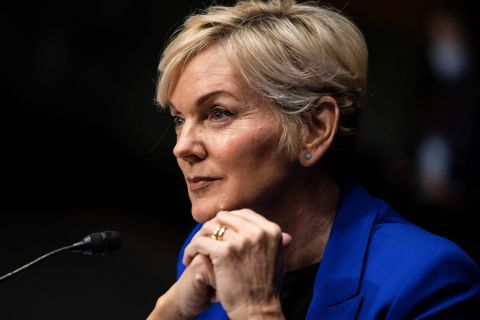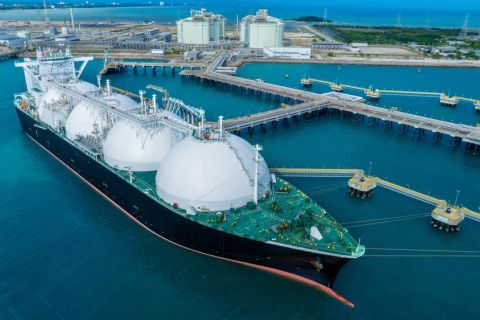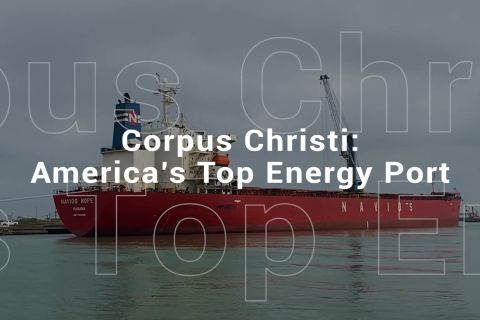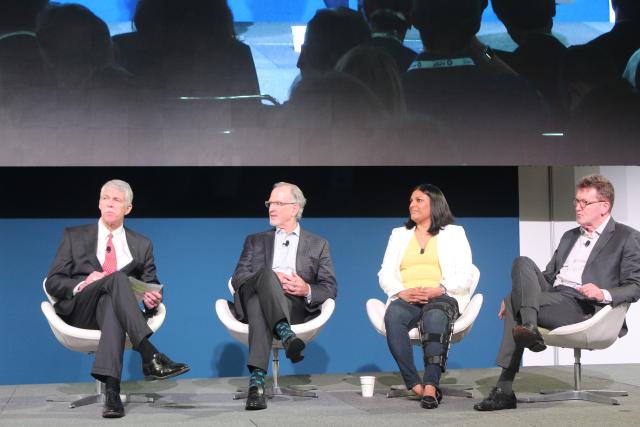
Panelists discuss technology and wind energy at the “Wind Plus: A Multi-Tech Energy Solution for the 21st Century” session at AWEA Windpower 2019 in Houston. (Source: Len Vermillion/Hart Energy)
HOUSTON—As the push toward renewable energy rapidly forges ahead with seemingly more uncertainty than real answers, the necessary technology for the inevitable build out of the growing energy source may be the most perplexing unknown.
The issues and needs are vast as demand for solar and wind energy and electric vehicles grow. There will need to be more and better transmission lines to move renewable energy to market faster and more efficiently as demand grows, experts at America Wind Energy Association’s (AWEA) Windpower 2019 conference this week. They also said there are infrastructure needs as electric vehicle and concerns about permitting as usage grows.
Will charging stations and fossil fuel companies find a partnering ground? How long can battery life be extended? These are all developing questions that will keep those in renewable energy developers up at night thinking about the future.
Neha Palmer, who is head of energy strategy at Google, and has nearly 20 years of experience in the energy sector, took the optimistic view as part of a three-member panel discussion developing renewable technology.
“I think the market is going to keep up,” Palmer said during the panel discussion titled “Wind Plus: A Multi-Tech Energy Solution for the 21st Century.” “Obviously there is great impetuous with pricing, there is great impetuous with customer demand, but the market seems to have evolved to absorb all of the demand, all of the technology that is coming on line.
“So from my perspective, it’s not just getting the cost down or making sure there is a viable demand to actually buy all of the energy they want.”
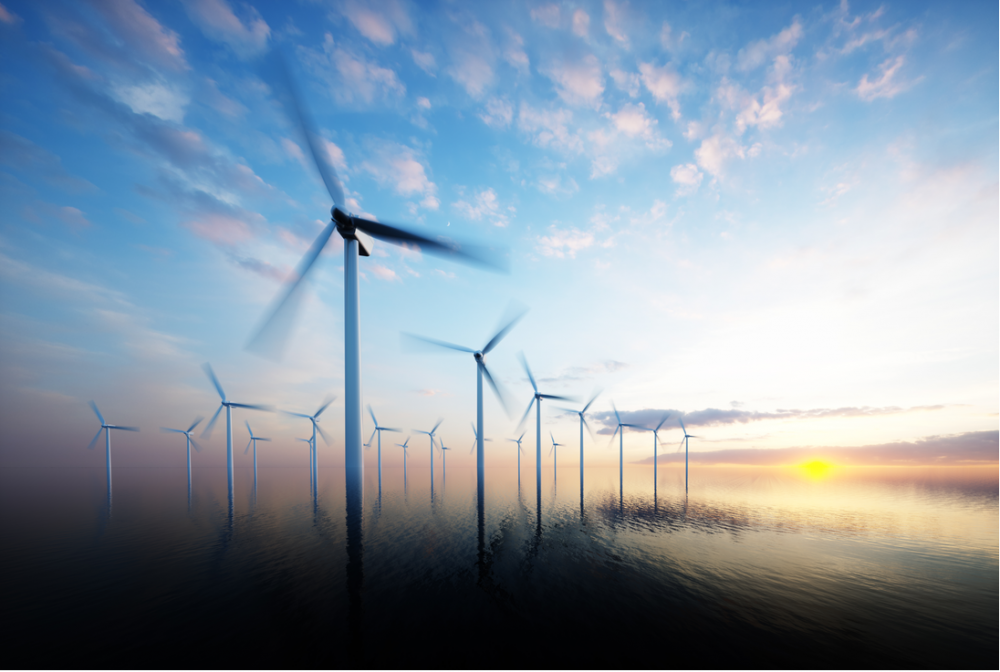
But some see the challenges ahead that must be addressed. Pattern Energy Group Inc. CEO and director Mike Garland is among them. He sees permitting getting harder at a time when more transmission is needed to tap into the resources around the country to move to market.
Garland also says the duck curve, a utility scale that measures power production, usage and peak demand times primarily in California is beginning to shift and expand beyond the state’s borders.
“The only thing people seem like they focus around California these days are the duck curve,” he said. “That’s because, in California, that we had a peak during the day when everybody turned on their air conditioning. There has been so much solar built that now the equivalent of the demand is very low and the peaks are now in the morning and the evening. Wind is a huge complement of that.
“I think that is part of the market catching up as these changes happen like the demand for solar increases how do we complement it with wind? The duck curve is far more extensive than people think. We were looking at the entire western region last week and you could see the duck curve happening in Nevada, Oregon, Washington. We even went up to British Columbia and because of the big cracking sound in California we are seeing duck curves in British Columbia now. You could see that the demand. … They are not shipping into California the way they use to and they are having kind of an inversion themselves.”
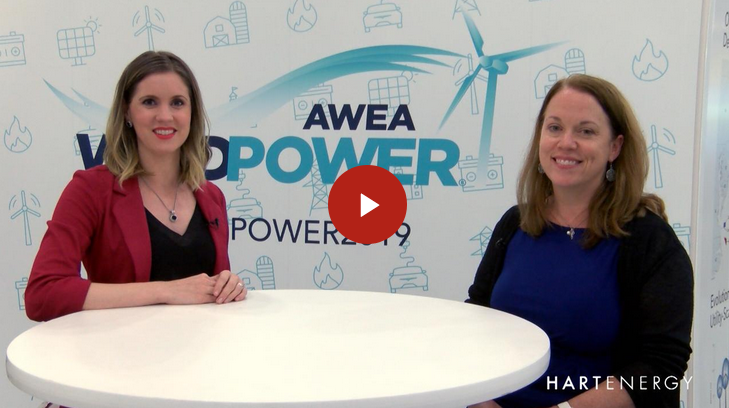
While solar and wind permitting and transmission are a big part of the puzzle, another major piece will be electric vehicles and the end-to-end connectivity. More efficient and cheaper batteries will need to be developed and more charging stations for cars and public transportation will be needed to meet demand.
“The demand side is a very important component in addition to solar, wind and storage to get us along that continuum of decarburization,” Palmer said. “But also to make that market work, I think there is a lot of thought on the supply side and how we can manipulate that to decarbonize but demand is going to be very important.”
There has long been discussion on finding a solution to lessening the use of carbon fuels to protect the environment, and it seems that the movement in that direction is growing. Michael Skelly, a longtime businessman in renewable infrastructure and the current senior advisor in financial advisory for Lazard Ltd., said improved electrification technology is necessary if the U.S. and world are serious about decarburization.
Skelly pointed to an electric vehicle initiative that Houston-based CenterPoint Energy is planning to roll out as a game changer.
“I think it’s super important for a city in Texas to do this because we need to sort of learn how all of this works because this is a big part of the transmission,” Skelly said. “The current way of doing things is an interesting curiosity but in terms of where we are headed as a country and hopefully as a world, the part to where almost everybody agrees that runs through electrification of transportation.
“And you really can’t get to the decarburization of transportation without electrification. We are now at a point where power emission is actually less than transportation emission. Now that we have had great progress, we have to go hard at the emissions from the transportation sector to continue on this path.”
With that being said, Skelly, Palmer and Garland all said they are prepared to be bullish, but to varying degrees, in the renewable technology market as it forges toward expansion as demand prepares to grow greatly. The politics that are driving the renewable expansion seem to support their aggressive outlook on the future.
“I’m super bullish,” Skelly said. “It feels like it’s not a question of if, it’s a question when and how. If you look at the technology of wind and solar storage, etc., we are right on top of the voided cost—without tax credit—of what it cost for natural gas. That is probably our closest substitute on the electric power side these days. So if we can get the infrastructure and create the markets properly, site these projects and there is just a tremendous amount of headway.
“There is a lot of political pressure and a lot of states saying we want 100% but we don’t know how to get there. I think we are on a great path and it’s … for the younger folks or people just getting into the industry, you’ve got a lot of work ahead of you. But it’s going to be exciting. Hold on.”
Recommended Reading
CERAWeek: Energy Secretary Defends LNG Pause Amid Industry Outcry
2024-03-18 - U.S. Energy Secretary Jennifer Granholm said she expects the review of LNG exports to be in the “rearview mirror” by next year.
GOP’s Reaction to White House LNG Pause Takes Shape
2024-01-31 - The U.S. House Energy, Climate and Grid Security subcommittee set the date for a hearing on the Biden administration’s recent pause on LNG export approvals for Feb. 6; Republican Louisiana Sen. John Kennedy pledges to block Biden nominees.
Belcher: Election Year LNG ‘Pause’ Will Have Huge Negative Impacts
2024-03-01 - The Biden administration’s decision to pause permitting of LNG projects has damaged the U.S.’ reputation in ways impossible to calculate.
Hirs: LNG Plan is a Global Fail
2024-03-13 - Only by expanding U.S. LNG output can we provide the certainty that customers require to build new gas power plants, says Ed Hirs.
Global Energy Watch: Corpus Christi Earns Designation as America's Top Energy Port
2024-02-06 - The Port of Corpus Christi began operations in 1926. Strategically located near major Texas oil and gas production, the port is now the U.S.’ largest energy export gateway, with the Permian Basin in particular a key beneficiary.

